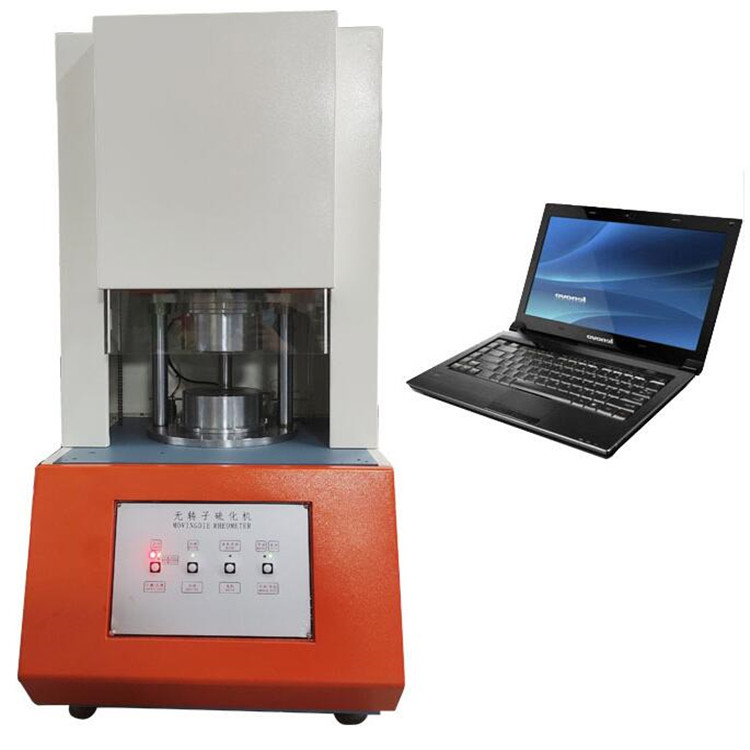Zeit: Beliebtheit:0Zeiten
 Anwendbare Normen:
Anwendbare Normen:
Hauptparameter (Table 1):
| Parameter | Bereich/Spezifikation |
|---|---|
| Temperaturregelung | 100–200°C (±0,3°C Stabilität) |
| Oszillationsfrequenz | 1,7 Hz (Standard), 0,5–2 Hz einstellbar |
| Dehnungsamplitude | ±0,5° Winkel oder ±0,05 mm Linear |
| Drehmomentmessung | 0–20 N·m (Auflösung: 0,001 N·m) |
| Probenvolumen | 3–5 cm³ (zylindrische Form) |
| Datenausgabe | Drehmoment-Zeit-Kurven in Echtzeit |
Arbeitsprinzip:
Der Tester arbeitet durch Abdichtung einer Gummiprobe in einem zweiteiligen Formhohlraum. Ein Abschnitt schwingt mit einer kleinen Amplitudenbewegung (Winkel- oder Linearbewegung), was eine Scherdehnung induziert, während der andere stationär bleibt. Ein Wandler misst die Drehmomentreaktion, die mit den viskoelastischen Veränderungen des Materials während der Aushärtung korreliert.
Prüfprinzip:
Der Test simuliert industrielle Härtungsbedingungen durch Erwärmen der Probe auf eine vorgegebene Temperatur. Mit Beginn der Vernetzung steigt das Drehmoment aufgrund des steigenden Schermoduls. Das Instrument zeichnet Drehmoment vs. Zeitkurven auf, was die Berechnung von Aushärtungsraten und Aktivierungsenergie ermöglicht. Fortgeschrittene Modelle enthalten Temperaturkompensationsalgorithmen, um thermische Gradienten zu minimieren und Wiederholbarkeit zu gewährleisten. Durch den Vergleich von Drehmomentzunehmen (z.B. 90% MH) optimieren Hersteller Formulierungen für spezifische Anwendungen, wie z.B. hohe Rebound-Sohlen oder ölbeständige Dichtungen.
Anwendungen:
Die Präzision und die Einhaltung internationaler Normen machen diese Ausrüstung für moderne Gummilabore unverzichtbar, um sicherzustellen, dass Produkte Haltbarkeit und Sicherheitsanforderungen erfüllen.
Unternehmen Telefon
+86-21-6420 0566
Arbeitszeiten
Montag bis Freitag
Handy:
13816217984
Email:
info@qinsun-lab.com
